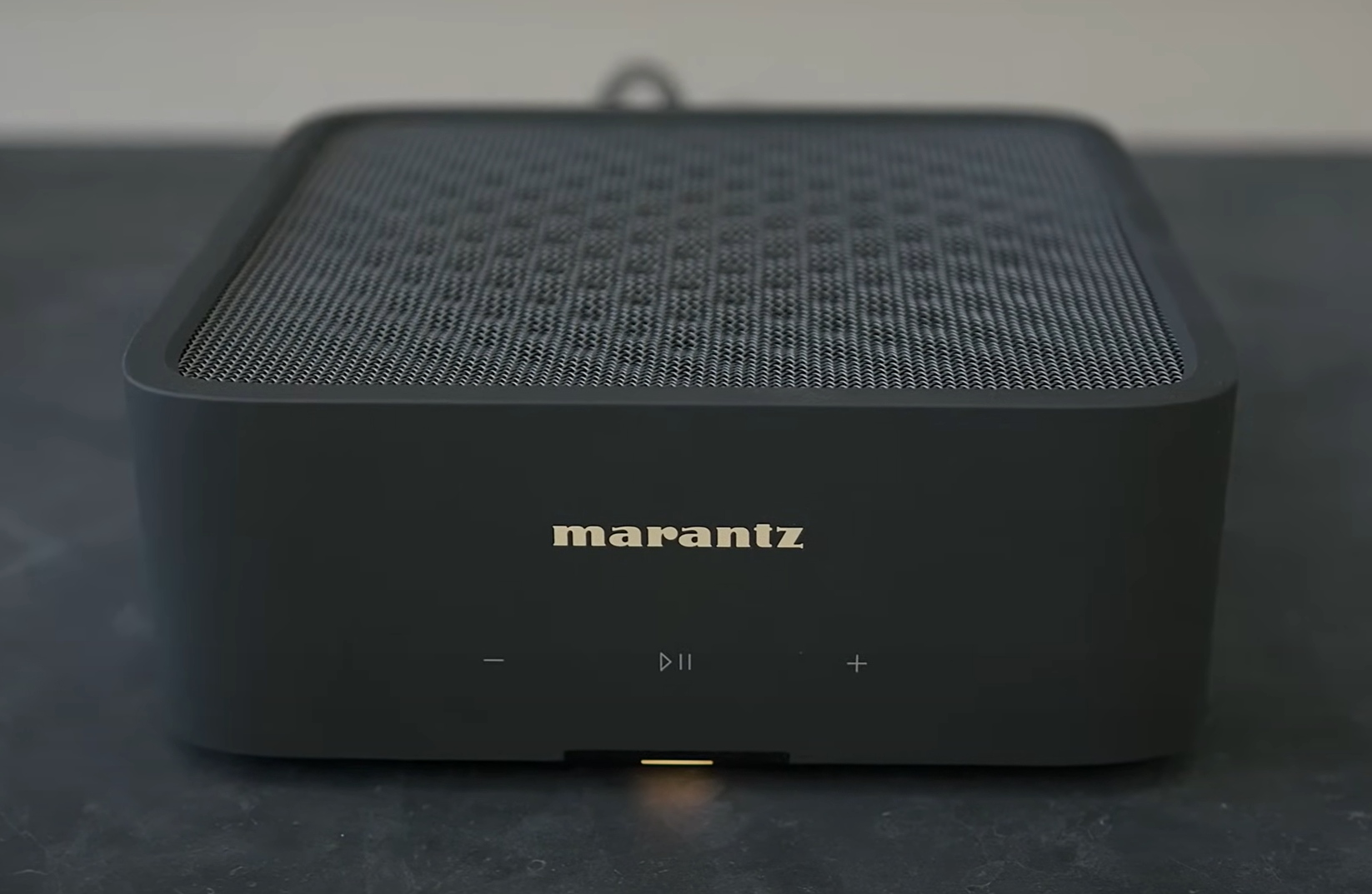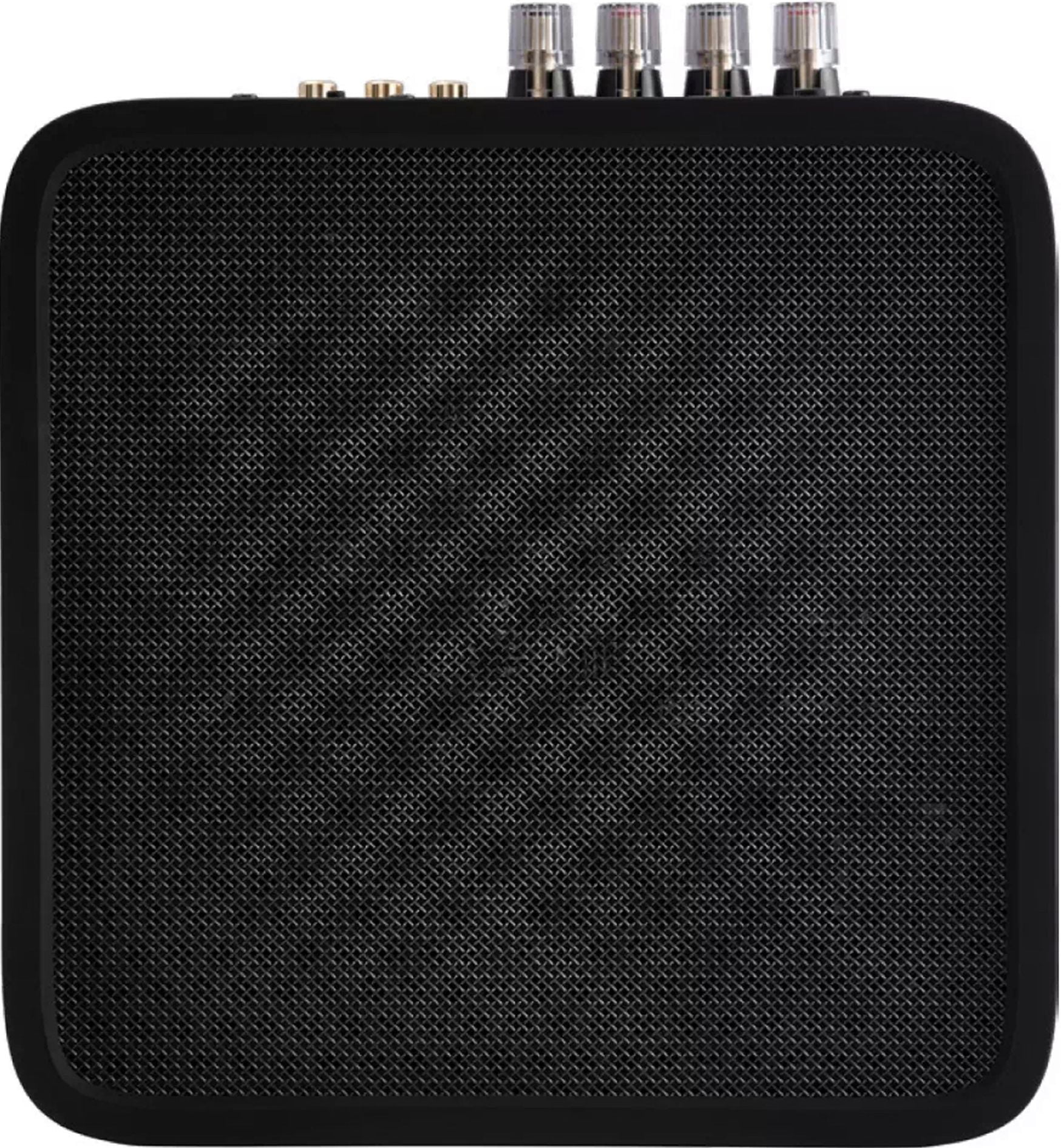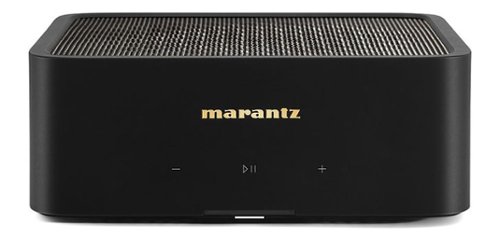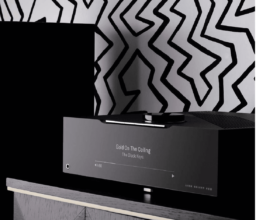Marantz Model M1 Review
The Marantz Model M1 aims to combine modern, compact design and broad connectivity with excellent sound. Here’s how this wireless streaming amplifier performs. Tested at 1,000 Euros.
by Simon Mendel
Marantz’s name precedes it. The American-Japanese manufacturer has been in the HiFi business for over 70 years, known for high quality and the typical warm Marantz sound. In June this year, Marantz introduced the Model M1, the latest addition to their extensive product range. The Model M1 is an extremely compact wireless streaming amplifier that packs a punch despite its small size. Marantz’s little amplifier promises a lot, but before we get to the practical test, let’s take a closer look at the Model M1.

Compact
Before we even unpack the Marantz Model M1, we are impressed by its size. While many other amplifiers come in huge packages, the Model M1’s box is only slightly larger than a shoebox. After unpacking, the small almost-cube stands before us. It measures approximately 22 centimeters in width and depth, with a height of just under 8.5 centimeters. Its design is notably simple, presented in sleek matte black.
The front is adorned with a gold-shimmering Marantz logo on the plastic casing, with three touch buttons below for playback control. At the bottom edge, a small LED strip indicates the status. The top surface is made of an interesting aluminum mesh with a nubby texture that gives slightly when pressed. It’s not recommended to place anything on top of the streaming amp—a general rule for amplifiers, considering heat dissipation.
The small amplifier’s footprint is slightly smaller than its base, giving the Model M1 a floating appearance. Additionally, ventilation slots are found on the underside. A closer look reveals that the amplifier’s technology is housed in a kind of sub-chassis, connected to the outer casing at only a few points. This allows air to flow around the device, cooling the amplifier. It does get noticeably warm during operation, but this heat is effectively dissipated through the top grid structure. The rear terminal offers all the inputs a modern lifestyle amplifier needs. There are the speaker connections, which, like the entire product, are of exceptional quality.

Additionally, the little Marantz amp features a sub-out, making it a 2.1 amplifier. Input-wise, the M1 has a pair of analog RCA jacks and various digital interfaces. HDMI eARC, optical, and USB-A inputs are all present. A USB drive can be connected to play music, and an external control device can be attached via IR-In if needed. To connect the streaming amplifier to the home network, there’s an Ethernet port. Vinyl fans might be disappointed by the absence of a phono stage, but we can live with it, as the Marantz Model M1 is primarily positioned in the digital realm.
Digital Ace
The compact Marantz box relies on a fully digital switching amplifier. This means that incoming digital signals—whether from streaming or USB—pass through the amplifier’s circuit in the digital domain. This allows it to deliver an output power of 100 watts per channel at 8 ohms (20 Hz to 20 kHz). As a result, it’s suitable for a wide range of speakers, from small to large. The Marantz amplifier handles PCM signals with a maximum resolution of 192kHz sampling rate and 24-bit depth. DSD is supported up to 5.6 MHz.
The small M1 amp also packs a lot of power. Alongside Bluetooth 4.2.X, various streaming functions are available. It supports Marantz’s and Denon’s multi-room app, Heos. With this app, devices can be easily integrated into a multi-room setup, and it offers many additional functions. Users of Marantz or Denon AV receivers and network amplifiers will already be familiar with Heos and its features, but more on that later. Besides Heos, other protocols like AirPlay2 and Spotify Connect are supported. Android users might miss Google Chromecast built-in, as it’s not included.
For a modern streaming amplifier, a powerful DSP is essential. The digital signal processor allows for deep sound customization according to the user’s preferences. All adjustments can only be made via the Heos app, as unfortunately, no remote control is included. The smart streaming amplifier is entirely controlled via smartphone.
Heos and Sound Adjustment
As a streaming-capable Marantz device, the Model M1 is controlled via the Heos app. This app allows you to select sources, adjust the volume, and much more. Unfortunately, the app requires registration for some functions, like streaming music directly from the app. Aside from that, Heos runs smoothly and is quite intuitive—especially after a major update in December last year. Since then, all connected music libraries can be searched for titles simultaneously. Heos supports a wide range of popular streaming services like Spotify, TIDAL, Amazon Music HD, and internet radio. The Model M1’s sound adjustment, however, is quite basic.
Only treble and bass can be adjusted—there’s no fully parametric equalizer. Through the app, you can choose between two filters of the “Marantz Musical Digital Filtering” technology [MMDF for short]. The two filters differ only in nuances. A noticeable difference without an A/B comparison is practically nonexistent. The small Marantz does have some other interesting sound settings. There are different modes for TV sound, which we’ll explore first in our test.
Movie Time!
As a 2.1 amplifier with such a small form factor, the Model M1 is naturally suited for use with a TV, especially since it has built-in Dolby Digital decoding. We paired the small amplifier with the SVS Ultra Evolution Pinnacle floor-standing speakers and entered the world of cinema. We connected the amplifier to our TV via the HDMI eARC port, started the movie, and switched from “Stereo” to “Virtual” sound mode.
The latter broadens the sound, making it feel like we’re listening to multi-channel audio. This effect works very well with the SVS floor-standing speakers, and you can tell these speakers come from the home theater world. Especially in grand soundscapes, this mode is a real asset. We were particularly impressed that the clarity of the center channel didn’t suffer, which often happens with such broader sound options.
There’s also a “Dialog Enhancer” mode for TV sound. This mixes the information from the center channel of the multi-channel audio track—which usually contains the dialogue—a bit louder. This sound mode is also very effective and tastefully tuned. You can adjust the effect in five levels to achieve the desired result. Even at the highest setting, the mode doesn’t feel overdone and never comes across as unnatural. But enough about the big screen—let’s move on to the music sound test.

Musical Performance
For our music test, we streamed conveniently from a smartphone.
We started with the British electronic producer Vegyn and his track “Halo Flip.” The atmospheric composition of strings, deep bass, crisp drums, and Lauren Auder’s pitch-shifted vocals immediately showed the power of the little Marantz Model M1. Everything has a solid punch, and we were particularly struck by the finely resolved soundstage that the amplifier created in our listening room.
Since it can be difficult to capture the sonic identity of an amplifier, we compared it to various amplifiers in different price ranges. Next, we listened to “Spotlight” from the new album by country legend Johnny Cash.
Compared to other amps, the Marantz Model M1 proved to be somewhat more robust in the low frequencies. At times, it even sounded a bit “boxy.” However, it delivered a crisper representation of the drums and vocals than, for example, the Arcam Radia A25. Finally, the Marantz Model M1 turned our listening room into a dance floor. We listened to “Apple” by British pop singer Charli XCX from her recently released album “Brat.” Once again, the amplifier demonstrated its power, spreading a detailed soundstage.
It also brought a nuanced warmth that suited the electronic pop song very well. The synths shot out of the SVS speakers, and we were pressed right into our listening seats. This made for a truly enjoyable sound test. For another comparison, we brought in an amplifier that’s somewhat similar to the Model M1. The WiiM Amp, although in a much lower price range than the Marantz, has also received high praise.
In terms of design and connection options, both models are quite similar. However, the Marantz proves that the price difference can make a big difference in sound quality. The Model M1 is more focused and sounds both wider and more organized. It also has significantly more power, allowing it to drive demanding speakers effectively.

At the end of our test, we have to admit that the Marantz M1 won us over. It combines a modern, compact form factor and extensive connectivity with the refined, warm sound that we’ve come to expect from Marantz over the decades. Bravo!
Specifications
- Device Class: Streaming Amplifier
- Price Category: Entry Level
- Manufacturer: Marantz
- Model: Model M1
- Price (RRP): 1,000 Euros
- Dimensions (W/H/D): 21.7 x 8.4 x 23.9 cm
- Weight: 2.2 kg
- Information: www.marantz.com
- Operation: Transistor
- Power: 100 W at 8 Ohms
- Power Consumption: Standby: <0.5W, Operation: 13W
- Inputs
- Line-In, HDMI, eARC, Optical, USB-A, Ethernet
- Streaming: Heos, AirPlay2, Spotify Connect, Bluetooth
- Outputs
- Speakers (2.1), Subwoofer Out
- MEASUREMENT RESULTS
- Power Consumption:
- Standby:* < 0.5 W
- Operation:* 13 W
- Power Consumption:
Verdict
When you purchase through links on our site, I may earn an affiliate commission. Here’s how it works.
ALTERNATIVES
The Arcam SA10 is a bit older but still an interesting alternative to the Marantz Model M1. While it lacks the extensive streaming features of the Model M1, it focuses on classic HiFi amplification and delivers high-quality sound.












